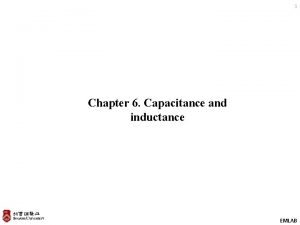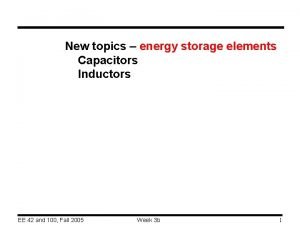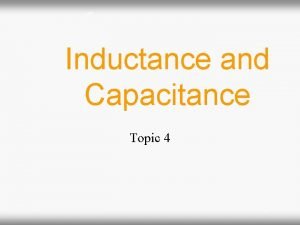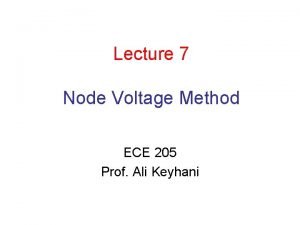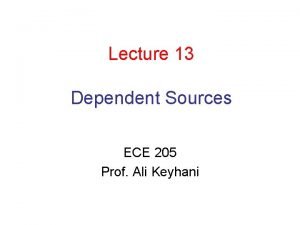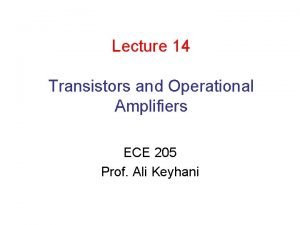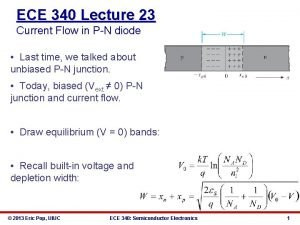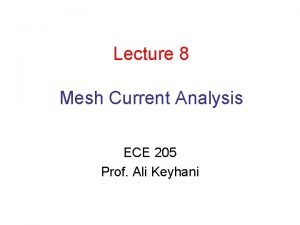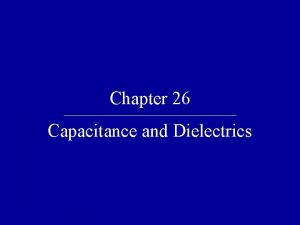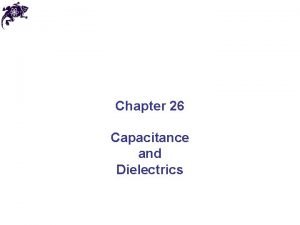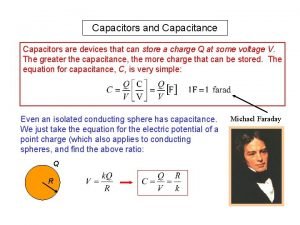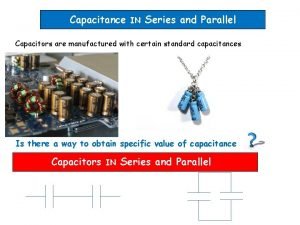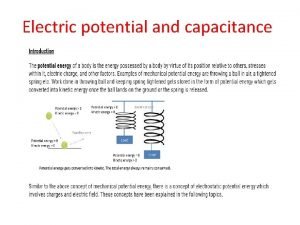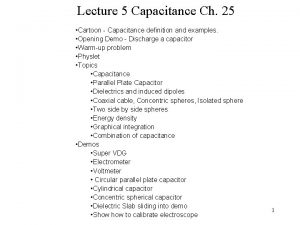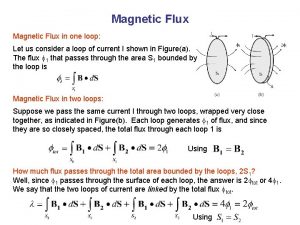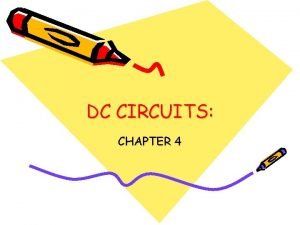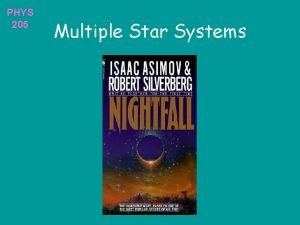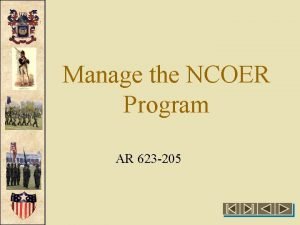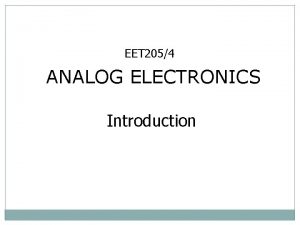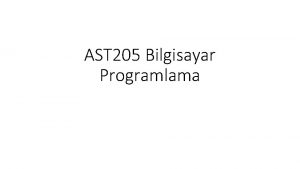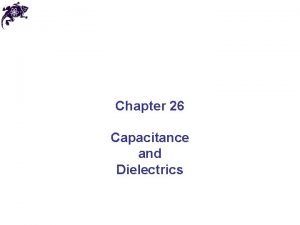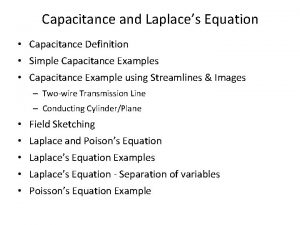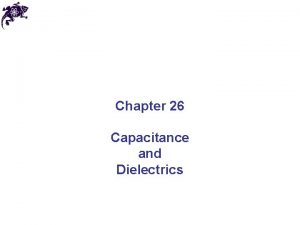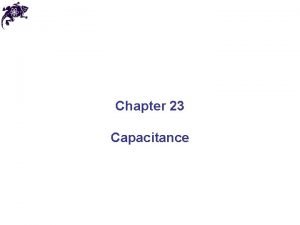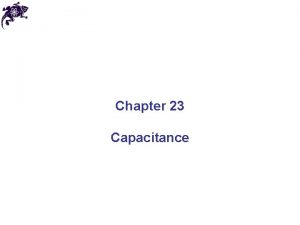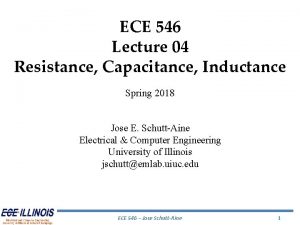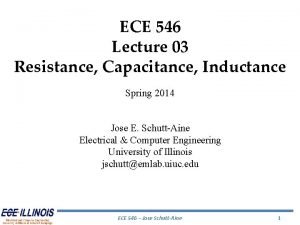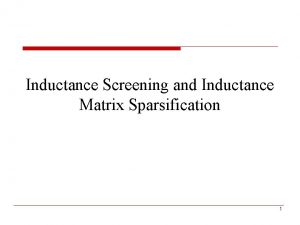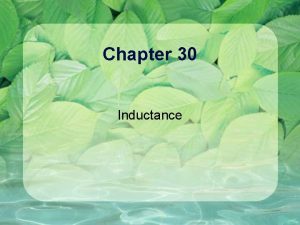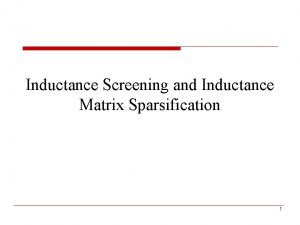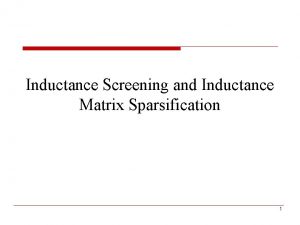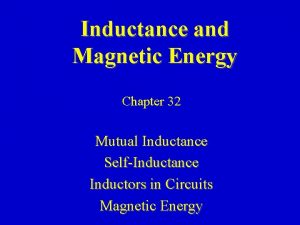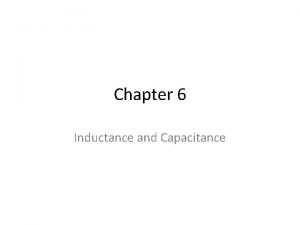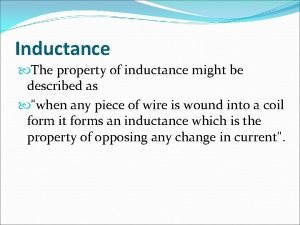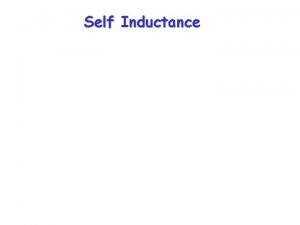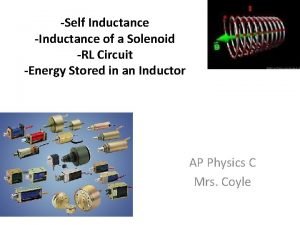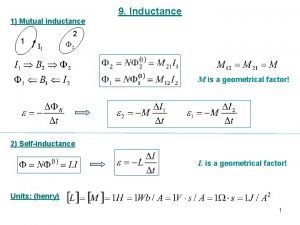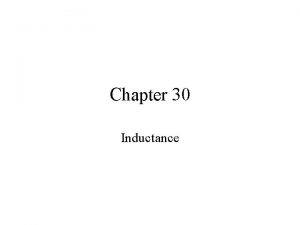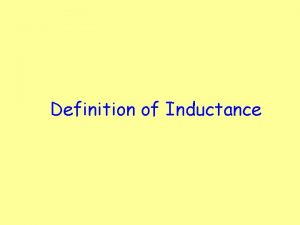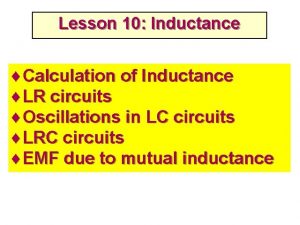Lecture 18 Inductance and Capacitance ECE 205 Prof

























- Slides: 25

Lecture 18 Inductance and Capacitance ECE 205 Prof. Ali Keyhani

Capacitor • A dynamic element that involves variation of an electric field produced by voltage • In its simples from it is constructed by two parallel metal plates and a dielectric material in between the plates

Capacitor • Circuit symbol: Some examples of capacitor

Capacitor Source: Wikipedia

Capacitor • When there is a voltage difference between the conductor plates, an electric filed is produced in insulator • The electric field results in charge separation with equal and opposite charges on the conducting plates • The resulting electric field:

Capacitance • Relationship between the voltage across the capacitor and the electric field: • Therefore the charge can be found : Parameter C is called Capacitance of the capacitor Unit: Farad (F)

I-V relationship Integrating the above equation yields the integral form of the i-v relationship:

Power and Energy • Capacitor power: • Stored energy: • Note: – Current in capacitor is zero unless voltage is changing – The capacitor voltage is continuous: a sudden change in capacitor voltage requires infinite current which is impossible – The capacitor absorbs power when storing energy and releases the energy when it delivers power to the circuit

Example 1 The voltage given appears across a 2μF capacitor. Find the current through the capacitor

Example 1 Solution:

Example 2 If the voltage across a 0. 5 μF capacitor is: v(t)=50[sin(5000 t)+cos(2500 t)]u(t) Find the expression for the current through the capacitor.

Example 2 Solution:

Inductor • Inductor is a dynamic element involving the time variation of a magnetic field by current • When a wire is wound into a coil the magnetic flux ɸ concentrates along the axis of the coil: • Flux linkage (webers (Wb) ):

Inductor • Using flux linkage instead of flux: • Parameter L is called inductance of the coil and its unit is henry (H) • Circuit symbol

Inductor Source: Wikipedia

i-v relationship • Faraday’s law: • This will lead us to the i-v relationship: • By integrating this equation the integral form of the characteristic is found:

Power and Energy - Power: - Energy: integrating the power equation yields energy

• Note: • The voltage across the inductor is zero unless the current is changing • Current through the inductor is continuous since a sudden change in current requires infinite voltage and power which is impossible • The inductor absorbs power and stores energy and delivers power when releases the energy to the circuit

Example 3 The voltage and current across an inductor are given. – Find the inductance. – The energy stored at time t=1 sec if the initial energy is zero.

Dynamic OP AMP Circuits • The inverting OP AMP integrator

Dynamic OP AMP Circuits • The inverting OP AMP differentiator

Example 4 The input to the circuit is vs(t)=VA cos(2000 t) and the OP AMP saturates at ± 15 V. Find: – The expression for the output – The Maximum value for VA

Equivalent Capacitance • Parallel capacitors

Equivalent Capacitance • Series capacitors

Equivalent Inductor • Parallel inductors • Series inductors
 Inductance capacitance formula
Inductance capacitance formula Capacitor and inductor
Capacitor and inductor Relationship between capacitance and inductance
Relationship between capacitance and inductance Node voltage
Node voltage Node voltage analysis with dependent sources
Node voltage analysis with dependent sources Ece 205
Ece 205 Qualitative description of current flow at a junction
Qualitative description of current flow at a junction Ece 205
Ece 205 01:640:244 lecture notes - lecture 15: plat, idah, farad
01:640:244 lecture notes - lecture 15: plat, idah, farad Equivalent capacitance in series
Equivalent capacitance in series Capacitance and dielectrics quiz
Capacitance and dielectrics quiz Capacitance and dielectrics
Capacitance and dielectrics Energy stored in a capacitor formula
Energy stored in a capacitor formula Capacitance in series and parallel
Capacitance in series and parallel Relation between capacitor and voltage
Relation between capacitor and voltage Equipotential surface
Equipotential surface The equivalent capacitance between a and b is
The equivalent capacitance between a and b is Magnetic flux and inductance
Magnetic flux and inductance Voltage across an inductor
Voltage across an inductor Ar for ncoer
Ar for ncoer 205 to binary
205 to binary Types of ncoers
Types of ncoers Eet205
Eet205 Ast 205
Ast 205 Sia 205
Sia 205 Phy 205
Phy 205
